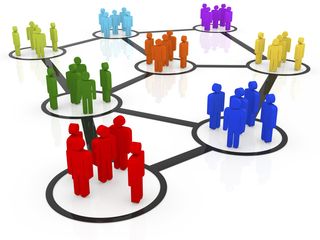on
Uncovering Emergent Collaboration Through Community Sensemaking - Part 1
Social Media in the Enterprise
As social media transformed communication in our personal lives, it was not long before companies began positioning themselves to bring a similar transformation to the enterprise. Fostering adoption of enterprise social media has not been easy, especially given prevailing beliefs among many that social media provides little practical benefit. Questions continue to linger in the early stages of deployment as organizations seek to understand the platform’s value proposition for their operational context.

How is our community doing? Are we on track? Are we being successful? What could we be doing better?
Such questions were routine as Dave Gutelius and I worked with Jive customers to offer them a deeper view into their communities. Over time, we helped customers develop a new frame of reference while highlighting new opportunities to positively impact their organization.
Much of the confusion we witnessed originated from the ways community engagement is reported. So often, engagement is characterized by cumulative counts of actions taken around artifacts such as documents, blog posts and comments. Community managers are left struggling to assess the absolute significance of those values. Without additional information, it is practically impossible to make any meaningful judgements beyond assessment of the trend.
My work focused on elevating the community assessment from artifact-level events to user- and relationship-level events. By helping community managers better understand the distribution of behavior across their community, they are able to uncover new perspectives that are actionable.
Assessing Business Value
In this post, we’ll begin examining one thread of this work aimed at addressing the following question: What business value is the community providing?
Clearly this question could be approached from a variety of directions. For many, the ideal would be to correlate behavior within the online community with outcome data in other enterprise systems (ex. sales outcomes in Salesforce.com). The underlying desire here is to establish some causal relationship between group behavior and performance. While this would be compelling if achievable, a number of hurdles stand in the way.
The most glaring difficulty is the fact that we generally do not have a complete view of the organization’s activities. Even in the ideal case, where everyone uses a collaboration platform such as Jive as their primary work environment, the reality is that other channels of communication, both offline and online, remain a part of the organization’s workflow. Whether it is face-to-face meetings, email, IM or teleconferences, we have a variety of ways we engage in the workplace to get things done. This is precisely why adoption of an enterprise social collaboration platform is so difficult to catalyze. Employees are being asked to make a significant modification to their workflow. The value proposition to them is not immediately clear and the switching cost is high. In many cases, the platform may remain of little value to employees precisely because their collaborators are not engaged. How does one tell a more compelling story about the possibilities that a new communication environment offers?
Uncovering Success Stories
Consider what we know at the time of deployment of an online community. A platform provider such as Jive has success stories to offer from their current customers who are further along in their community development journey. Yet those stories may only be partially relevant to the current customer given the organizational context. The customer representatives have some conceptualization of what they think their organization requires and what the offered collaboration platform can achieve. Yet neither of those views is completely accurate.
At the time of deployment, the representatives from the platform provider and the customer have a shared set of expectations about the dominant use cases they believe will emerge as employees begin to use the platform. Yet due to limitations in their respective views, surprises will emerge. Users of the platform will do surprising things as they conceive of new ways to work with the new capabilities given to them. The real value will be uncovered through their experimentation. The question is: How will the community managers know when valuable collaboration process discoveries are made?
This became the focal point of my work. How do we build sensemaking tools to empower community managers to uncover success stories in the community as they unfold? In the earliest days, the community is not operating at a scale where automation is needed to help direct one’s attention. The community manager can manually survey all activity. Yet that can rapidly change. When it does, the community manager is beholden to others to share their victories. Unfortunately that does not happen as often as one would hope.
Thankfully we do not need to depend on self-reporting to make such discoveries. We can instead analyze user activity patterns within the community to spot promising areas for further investigation. This becomes the basis for an organizational learning loop where the community manager can examine the current community state, look for opportunities, take actions and monitor changes. In the next post, we’ll focus in on the specifics of how this is accomplished and the benefits that such a process can yield.